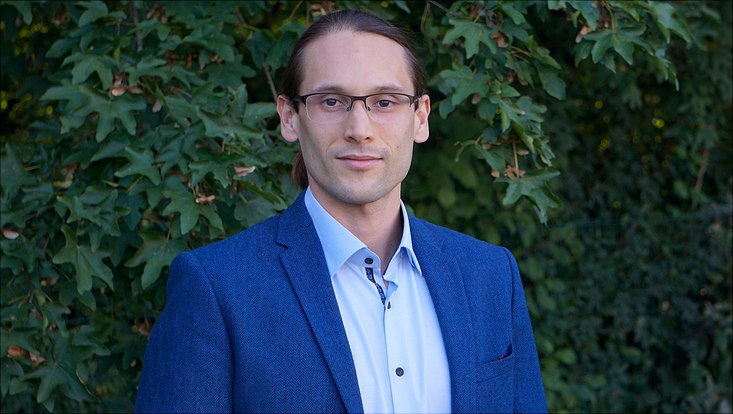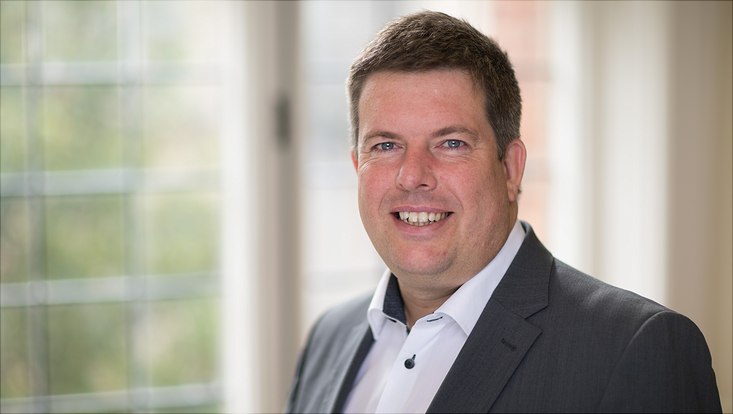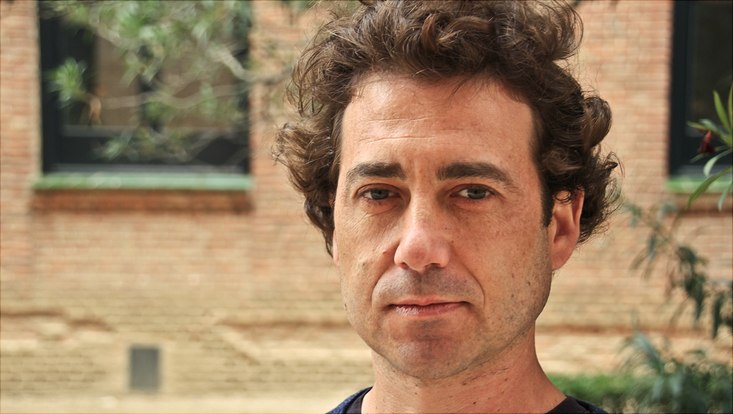“Welcome Aboard”Exploring knots, handles, and wormholesProf. Dr. Paul Wedrich will contribute his expertise to the Department of Mathematics and the Cluster of Excellence Quantum Universe
15 October 2021, by Wedrich/Red.

Photo: privat
Every year, Universität Hamburg welcomes many new researchers. Here, we present part of a series to introduce them and their areas of research.
Paul Wedrich recently joined the Department of Mathematics as a Professor for Cohomological Methods. He explains his fascination with a research area that challenges our powers of imagination. Prior to his move to Hamburg, Paul Wedrich worked at the University of Bonn and the Max Planck Institute for Mathematics.
My research area in 3 sentences:
I use algebraic structures inspired by quantum physics to explore low-dimensional manifolds and knots; the latter can essentially be likened to knots in a rope. I specialize in homology theories for knots, which can be used to measure characteristics of a temporal evolution of knots. This enables the detection of subtle differences between smooth 4-dimensional manifolds.
I explain what I do to my friends and family as follows:
Just like in all other scientific fields, measuring instruments are available in mathematics. Mathematicians refer to these as invariants and use them to explore mathematical objects such as knots. These invariants often work algorithmically, which means that we’re able to use formulas to get a computer to calculate them for us. I employ theoretical methods and computer experiments to develop and investigate such measurement instruments.
Interfaces between my research and the Cluster of Excellence Quantum Universe:
Invariants are building blocks for topological quantum field theories, which we investigate in great depth within the Cluster of Excellence Quantum Universe. Cohomological methods allow us to access powerful new examples of such topological theories in 4 dimensions. This is probably the most interesting number of dimensions—both in mathematics and in everyday life—in which we experience 4-dimensional space-time.
I am so glad to be in Hamburg, the city and the University, because. . .
The research area of particle, astro- and mathematical physics offers the ideal interdisciplinary environment for my research. I find it particularly exciting to be involved in conception of the new teacher training programs, and look forward to exchanging with my new colleagues and to meeting countless interested students. Hamburg is a versatile, liberal, and future-oriented city, and I’m absolutely delighted to be back close to the ideal location for wind and water sports after a few years away from the coast.
This is why students should come to my lectures:
I find it fascinating how vivid everyday situations can be translated into sophisticated mathematical constructions on the one hand and how such constructions can broaden our perception and hone our intuition on the other. A great many people have an intuitive notion of a wormhole, for example, which is a kind of cosmic tunnel that provides a hypothetical shortcut between 2 otherwise distant points in space. In mathematics, we refer to this as a 1-handle as it can be likened to a handle on a cup. Things only get really interesting when we also allow 2-handles though: these are also shortcuts in space—not between 2 points, but rather from all points on a knot to one another. Once you understand this—and mathematical tools can help here—you can use knots to describe various forms of 3- and even 4-dimensional spaces. So anyone who has always wanted to be able to imagine 4-dimensional objects and also draw them is in the right place here!
Reaching out to the world: I work with the following international and federal institutions and universities. . .
There are a number of high-profile research programs in my field around the world. Among others, I am involved in collaborative projects with colleagues at universities in Bonn, Montpellier, Stanford, and Sydney as well as at the Microsoft Station Q in Santa Barbara.
My research is important to society, to help resolve the following issues:
My scientific research is based on questions such as “What forms can 4-dimensional space take?” and “How can they be distinguished?”. This is essentially basic research. In the medium and longer term, applications using quantum computers and knotted biopolymers are conceivable. I believe the greatest impact of my work on society lies in teaching. Our daily lives are increasingly shaped by technologies that have an ever more complex mathematical basis. I think it is important for a democratic society to have a broad understanding of this basis as far as possible. And I would like to contribute to this through my teaching.


